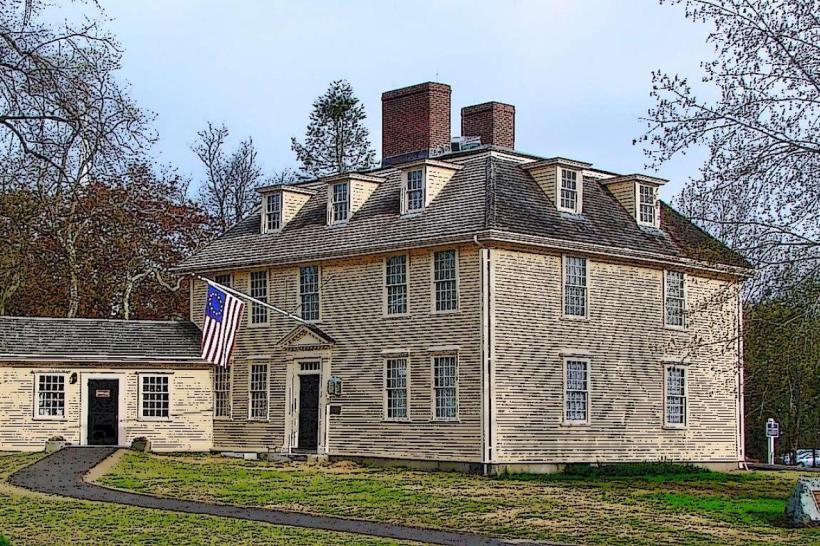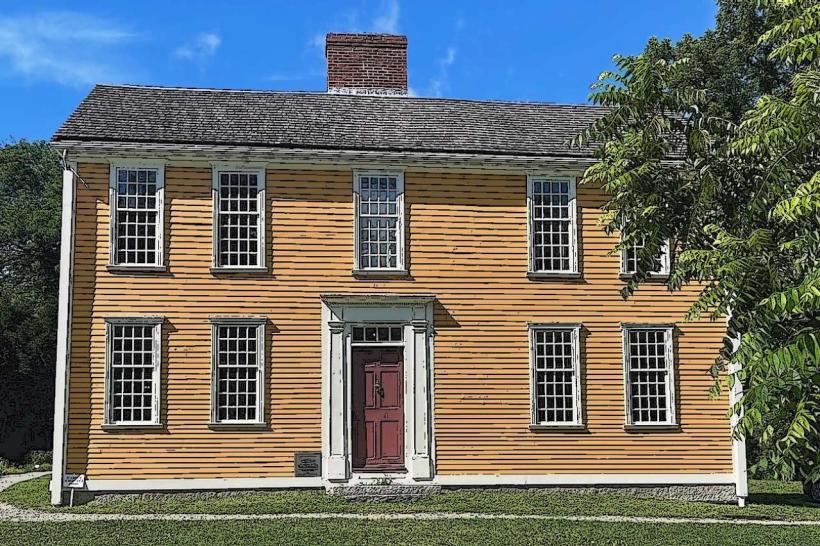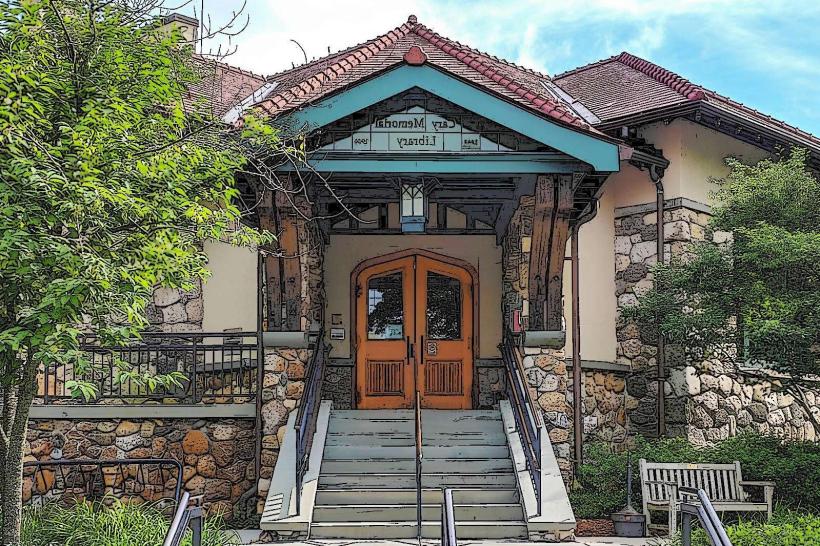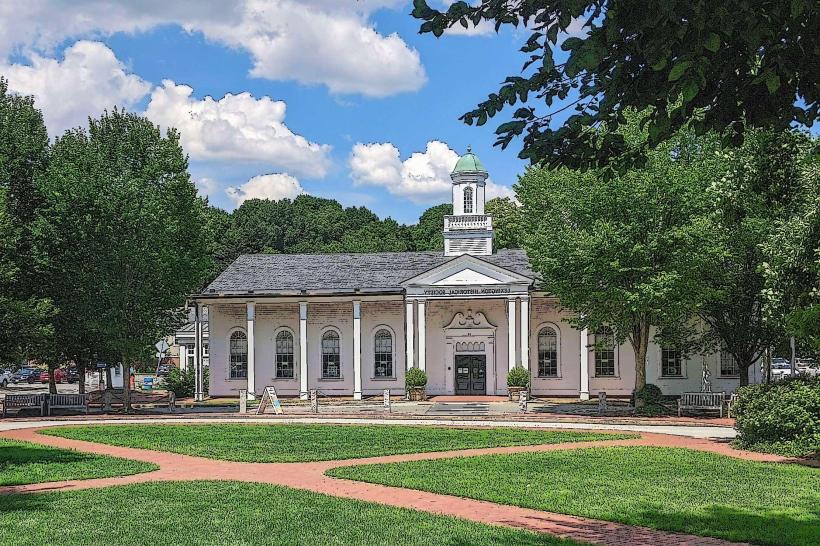Information
Landmark: Munroe TavernCity: Lexington MA
Country: USA Massachusetts
Continent: North America
Munroe Tavern, Lexington MA, USA Massachusetts, North America
Overview
Munroe Tavern, at 1332 Massachusetts Avenue in Lexington, still stands much as it did in colonial times, its white clapboards bearing witness to the crucial role it played in the American Revolutionary War, besides first built in 1735 and later expanded, it now serves as a museum run by the Lexington Historical Society, where the vintage pine floors still creak under your steps.Buckman Tavern is tied to the American militia, but step inside Munroe Tavern and you’ll glimpse the Revolutionary War through British eyes, right down to the scuffed floorboards where redcoats once stood, what’s more this duality adds depth to the story of April 19, 1775-the day musket smoke drifted over the fields at the Revolution’s first battles.David Comee built the Munroe Tavern, and in 1770, William Munroe-well-known in town and serving in the Lexington militia-bought it, its white clapboards catching the morning sun, as well as the Munroe family lived there, and by night it doubled as a licensed public house with the scent of ale drifting from its doors.When the battle broke out, William Munroe served as Captain John Parker’s orderly sergeant, standing ready with the militia, and later took up arms in the Continental Army, consequently it began as a modest colonial tavern, but its quiet days ended when British troops, fresh from the smoke and shouts of Concord and Battle Road, streamed through Lexington.On the afternoon of April 19, 1775, with gunpowder smoke still hanging in the air after fierce militia resistance on the road from Concord, Brigadier General Hugh Percy and his British troops took over Munroe Tavern, turning it into their temporary headquarters and hospital, likewise the soldiers stayed about an hour, maybe two, their boots leaving fresh prints in the dust.That day, soldiers took over the tavern and turned it into a field hospital, its wooden tables now crowded with bandaged British men.safesafeHis death drives home how war’s toll reaches civilians too, leaving scars you can feel in an empty chair at the table, therefore the tavern still bears the wound-a single bullet hole in the ceiling, its gloomy edge a stark reminder of that day.The British takeover of Munroe Tavern shows that the bloodshed and fear of April 19 didn’t stop at Lexington’s green-it spilled into living rooms, kitchens, and the daily lives of ordinary people, not only that in November 1789, during his grand tour of current England, President George Washington stopped in Lexington and stepped through the doors of Munroe Tavern-a visit still remembered as one of its most remarkable moments after the Revolution.He ate at Munroe Tavern, and upstairs in what’s now called the “Washington Room,” you can still observe a table and chair said to have held his plates and glass that day, furthermore washington’s visit stood as a sign of national unity, honoring Lexington’s part in winning American liberty-the echo of musket fire still remembered there.Munroe Tavern showcases classic Georgian colonial style, with a balanced façade, a sturdy central chimney, crisp clapboard siding, and proportions that feel modest yet dignified, furthermore the interior has been carefully restored to its 18th‑century gaze, with a taproom and public space where travelers once shared ale, traded stories, and warmed their hands by the fire, sort of Colonial-era chairs line the walls, a polished bar stands near the corner, and the hearth gives off the faint scent of wood smoke, on top of that the Percy Room, named after General Percy, tells the story from a British soldier’s view, giving visitors a glimpse of Redcoat life-muddy boots, long marches, and the daily grind of duty in the colonies.Bullet Hole Exhibit: A single bullet pierced the plaster ceiling during the occupation, leaving a jagged mark that still carries the weight and pain of that day, at the same time the Washington Room, kept true to its late 18th-century style, holds furniture linked to President Washington’s visit-polished wood that still catches the afternoon light-and highlights the tavern’s symbolic role after the war.Today, Munroe Tavern welcomes visitors with a museum experience that weaves rich stories through its carefully arranged rooms, where the scent of timeworn wood lingers in the air, while it offers a counterpoint to the patriotic fervor tied to Revolutionary sites, reminding visitors that British soldiers bled and trembled, and that the war reached right into ordinary homes.In the museum’s interpretive exhibits, the tavern’s history unfolds through personal stories, worn wooden tools, and crisp, detailed signs, offering military, domestic, and civic perspectives, after that major restorations in 1939 and again in 2010–2011 kept the original woodwork, sturdy ceiling beams, and smooth plaster intact, while strengthening the building and making it easier to navigate.Audio tours are offered in several languages, so you can wander at your own pace-headphones on, footsteps echoing softly in the hall, in turn accessibility: There’s a ramp at the entrance, an elevator up to the second floor, steady climate control, and spotless modern restrooms, so everyone can get around comfortably, loosely The Lexington Field and Garden Club cares for the property’s historic grounds, including a Colonial Flower Garden filled with blooms arranged just as they might have been in the 1700s, from lavender borders to neatly clipped boxwood, also wildflower Native Plant Garden: a tribute to the region’s plants, showing how people once walked among and worked with the land.Heritage Rose Garden, where antique roses bloom just as they did in colonial recent England, their petals carrying the faint scent of summer rain, on top of that the gardens bring a quiet, reflective mood to the venue, a soft rustle of leaves standing in sharp contrast to the interior’s tales of war.You can visit from late April to early November, and in summer the doors stay open longer-sometimes until the light fades in the evening, then it’s usually open from noon to four, except on Tuesdays when the door stays locked.Admission is $30 for adults for full access to the Depot and all three historic houses, or $15 for a single house plus the Depot, therefore kids under 18 get in free, and veterans, seniors, educators, and AAA members receive discounts.You can pick a single-entry ticket or bundle your visit to include Munroe Tavern along with Buckman Tavern and the Hancock-Clarke House, where the wooden floors still creak underfoot, equally important in the story of the Revolution, Munroe Tavern offers a striking counterpoint, its red clapboards and quiet rooms speaking a different side of the past.Many historic sites in Lexington honor the patriot cause, but Munroe Tavern shows the war’s human toll-the smoke and confusion of retreat, and how ordinary homes were swept into the fight, equally important it offers a more layered, balanced view-one that weaves in the British perspective, the voices of local civilians, and the quiet, uneasy steps toward post-war reconciliation.Its legacy lives not just in the weathered stonework and preserved relics, but in the way it stirs you to think about the tangled truths of war and how they shaped what it means to be American, meanwhile munroe Tavern stands as a key Revolutionary War landmark in Lexington, Massachusetts, its red clapboard walls steeped in history.It served as the British headquarters during the retreat from Concord, then later welcomed President George Washington, carrying within its walls the layered story of America’s fight for independence, at the same time visitors step inside to find an authentic interior, a ceiling pocked with bullet holes, and grounds preserved with care, all combining into a vivid, moving experience that teaches as much as it stirs the heart.
Author: Tourist Landmarks
Date: 2025-10-06







